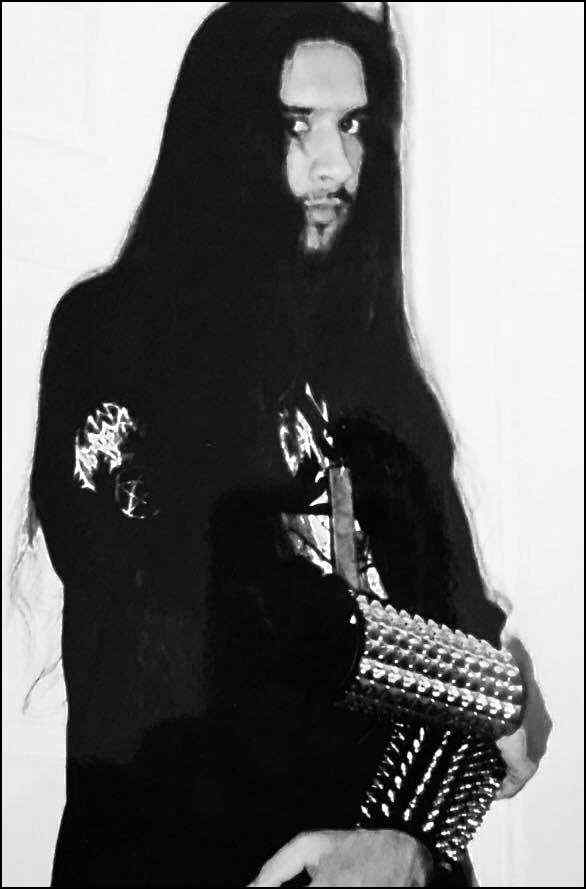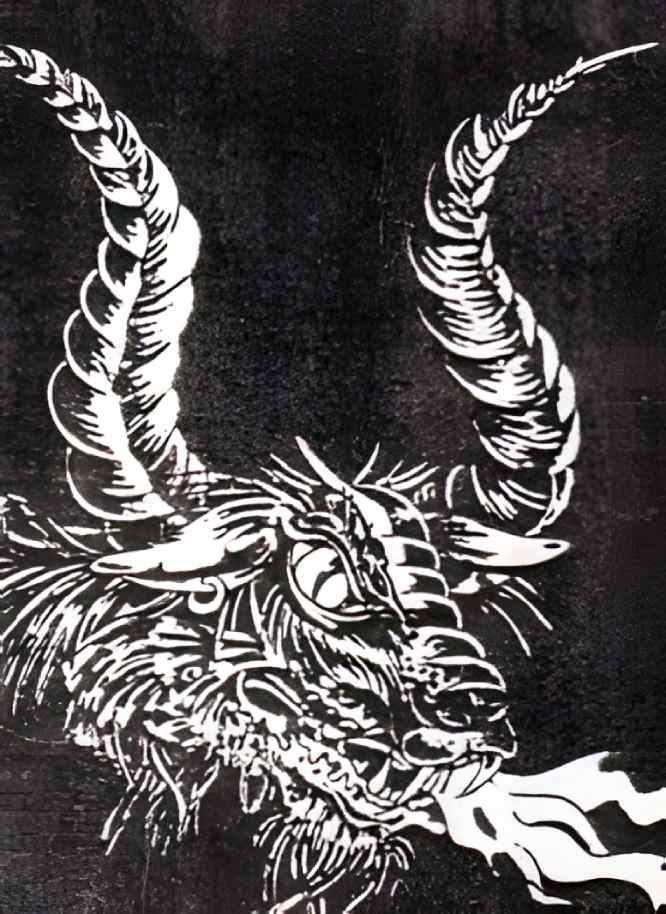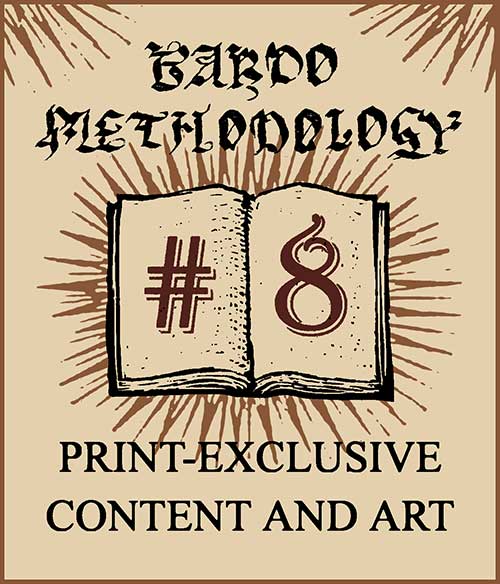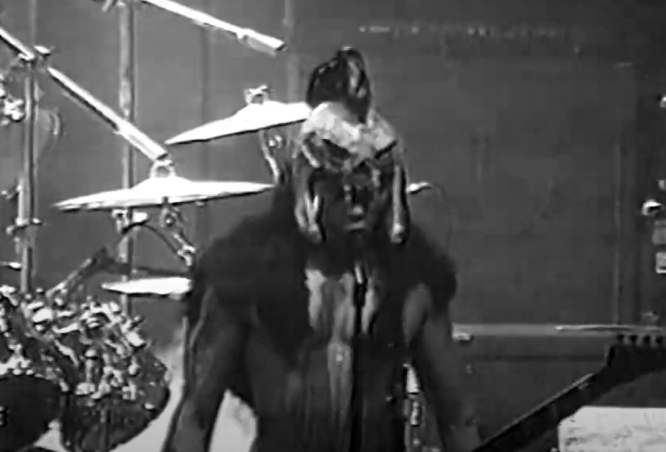Necropolis Records I
2025-10-01
by Niklas Göransson
Born between worlds and raised under foreign skies, Paul ‘Typhon’ Thind inherited a legacy of discipline and ambition. Necropolis was forged by an outsider who turned exile into empire.

Paul 'Typhon' Thind
PAUL THIND: My grandfather fought for the British in World War II as part of the Sikh Regiment. Once the fighting was over, he had the foresight to move the family to England. My father and his six brothers got there in 1964, I believe, which is how I ended up being born in the UK.
The Sikh Regiment was one of the most decorated units of the British Indian Army, active in theatres such as North Africa, Italy, and Burma. After the war and the Partition of India in 1947, many former officers and servicemen sought new lives abroad.
PAUL: On my mother’s side, my grandad was basically the Maharaja of Patiala’s right-hand man and would always accompany him on hunts. So, from both branches of the family, I grew up with these powerful archetypes of strict, disciplinarian men.
The raga tradition plays a central role in Sikh religious life; did spiritual music have a presence in your home?
PAUL: Yeah, my grandmother was very devoted to the Sikh faith and used to sing religious hymns for us. We always had that kind of music in the family house – whether it was prayer, ragas, or just a strong reminder of who we were, our identity.
Sikhism originated in the Punjab region of India during the 15th century. Unlike Hinduism’s pantheon of deities, Sikhs believe in one God; their central scripture, the Guru Granth Sahib, carries a weight comparable to the Rig Veda but reflects a distinct theology and practice.
PAUL: My grandfather wore a turban – a central expression of Sikh identity – but my dad didn’t. He differed from most of his brothers in that regard. Not as rebellion, I think he just wanted to blend into British culture a bit more. Sikhs, as immigrants, were really focused on assimilating.
Compared with other South Asian groups who arrived in post-war Britain, Sikhs tended to assimilate quickly. Many had military backgrounds, spoke some English, and often saw themselves as partners in the Commonwealth project rather than outsiders.
PAUL: I mean, there’s a reason I was named Paul. My dad wanted me to become British-Indian – not just Indian-Indian. The family had fought for England; I wouldn’t say we felt the country owed us anything, but we were proud to be there.
Paul was born in 1974 and raised in Heston, a suburb of West London, close to Heathrow Airport. Growing up, both parents worked for British Airways, so the family travelled a lot. Later, they opened a deli in London.
PAUL: Being Punjabi, business and entrepreneurship were pushed on us as kids. Many Sikhs in England bought petrol stations, corner shops, all that. Once the deli opened, stocking shelves and dealing with customers taught me about work ethic, interacting with the public, and meeting expectations.
With only a handful of television channels, Top of the Pops became a weekly ritual for Paul. The show provided a snapshot of what was happening in the charts and featured a wide range of music styles, including pop, rock, dance, and even heavy metal.
PAUL: Seeing bands like SAXON and JUDAS PRIEST on TV definitely normalised metal for me. There was still a sense of danger, though. IRON MAIDEN came from East London – a rough, working-class part of the city – and people in MOTÖRHEAD shirts were often bikers or skinheads.
At eleven, Paul connected with a friend of a friend who had a serious vinyl collection – AC/DC, BLACK SABBATH, METALLICA, VAN HALEN, DEF LEPPARD, EUROPE, and various NWOBHM bands. There was also a nearby public library where he could rent records for a small fee.
PAUL: I’d come home with stacks of vinyl and record them onto tape. Meanwhile, other kids on our street were into U2, DURAN DURAN, and whatever was happening in pop or neo-punk. I believe those influences shaped what I’d get into later; perhaps that’s why melody became such a big deal to me.
By the time Paul discovered VENOM, they were already veterans of the UK underground, having released four albums and toured heavily across Europe and North America.
PAUL: I remember children’s shows like Tiswas having Ian Gillan (DEEP PURPLE) and even VENOM on – and while they didn’t exactly mock them, it portrayed heavy metal almost as something parodic. I understood where VENOM were coming from; on TV, they had to lean into the image.
That’s a very different adolescent introduction to VENOM than I had. A friend of mine played me “Die Hard”, which opens with ‘Satan, father…’ – terrifying and intriguing in equal measure.
PAUL: Yeah, all the Scandinavians I later wrote with were massive VENOM fans. Maybe because I grew up seeing them on TV, they didn’t seem as dangerous to me. Killer music, but it had a kind of camp vibe – that was part of their charm. HELLHAMMER and MERCYFUL FATE, though, looked the part and felt genuinely dangerous.
Paul has cited both bands as formative proto-black metal experiences: Swiss blunt force versus Danish theatrics.
PAUL: One is pure necro filth from central Europe, the other Scandinavian heavy metal brilliance. I loved the vocals Tom G. Warrior (HELLHAMMER) was doing back then. With MERCYFUL FATE, you had to stretch musically – accept King Diamond’s falsetto and the whole theatrical side.
In 1988, Paul made another landmark discovery: BATHORY’s “Under the Sign of the Black Mark”.
PAUL: There was Quorthon’s whole feud with VENOM, so the name kept popping up in Kerrang! and similar metal mags. When I finally heard BATHORY… the production, those vocals – everything sounded so distant and eerie, and it put me in a different headspace. That’s probably where my admiration for the Swedish sound started.
Were your British friends equally smitten?
PAUL: Not really. They loved MOTÖRHEAD, MAIDEN, VENOM, and SAXON, which wasn’t quite what I was searching for. Maybe because I felt like an outsider myself – not fully British, not fully Indian, but somewhere in between. There are forests and castles in England, yet Nordic history had a different kind of darkness: less familiar, not just in your backyard.
And you felt this tied into the sound?
PAUL: Yes – especially those unnerving, cold elements. In some way, the Scandinavian atmosphere resonated more deeply with me. Look at how many Swedish bands I ended up signing – keeping it within this melancholic, dark feel. Pretty ironic for a label that started in California.
In October 1988, at age fourteen, Paul moved with his family to the United States.
PAUL: My parents were tired of England – the weather in particular – and we had family and friends in California. So, they sold everything, moved, and started a new life in the States. Funnily enough, we ended up opening a fish-and-chip shop in the Bay Area. Fremont, to be exact.
In the mid-80s, the Bay Area became renowned for spawning thrash titans like METALLICA, SLAYER, EXODUS, and POSSESSED – a surge blending NWOBHM influences with punk aggression into a faster, more abrasive style.
PAUL: I caught the tail end of that wave. Had I been slightly older and come over two years earlier, I’d probably have stood up front at Ruthie’s Inn watching POSSESSED. Fremont is where FORBIDDEN EVIL is from; believe it or not, Russ Anderson would come into our fish-and-chip shop <laughs>.
When Paul arrived, much of the first wave had broken up, gone major label, or shifted style. By then, his musical focus was on the faster, more extreme thrash and early death metal – DARK ANGEL, DEATH, DESTRUCTION, SEPULTURA, SODOM, and so forth.
PAUL: I’d already discovered the darker, crazier stuff, but moving to California accelerated this development. Suddenly, I had access to venues like The Omni, One Step Beyond, and The Stone. The latter was on Broadway in San Francisco, where METALLICA shot the legendary Cliff ‘Em All footage; every thrash band came through there.
Can you recall any early live highlights?
PAUL: SEPULTURA’s “Beneath the Remains” tour in late ‘89 comes to mind, as does the Spiritual Healing Tour the following year. That one pulled together so many different people. Matt Harvey and Col Jones from EXHUMED were there, handing out flyers for an upcoming show with AUTOPSY, PLUTOCRACY, and IMMORTAL FATE.
By October 1990 – when the Spiritual Healing Tour with DEATH, PESTILENCE, and CARCASS took place – EXHUMED had recently formed as a goregrind band but not yet released anything.
A few months earlier, Paul turned sixteen and got his driver’s licence, which opened up a world of possibilities.
PAUL: Oakland is only twenty-five minutes away from where we lived, so I’d just drive to The Omni – even though it was in a shady part of town. I have great memories seeing all the local bands performing regularly: DEFIANCE, VIO–LENCE, WRECKING MACHINE, EPIDEMIC, and IMMORTAL FATE.
All but the latter were thrash bands. By then, the genre had drifted toward commercialisation while death metal was becoming the underground’s dominant force.
PAUL: Bay Area thrash had this ‘holier-than-thou’ vibe: ‘We write about environmental issues!’ Once death metal came along, it wasn’t taken seriously. Chris Reifert used to say in interviews that when he was in DEATH, people didn’t get it, and when he started AUTOPSY, nobody showed up.
Since Paul had always been drawn more towards Satanic metal than socially conscious themes, he proved susceptible to the darker sounds. Bands like DESTRUCTION, DARK ANGEL, and SODOM served as the bridge between sinister thrash and death metal.
PAUL: This ties back to what you asked about VENOM. When I first heard “Darkness Descends” (DARK ANGEL), it felt genuinely evil – even more intense than bands like POSSESSED. If you listened to that record at the time, especially in the Bay Area, you’d been paying attention and were part of the underground.
By 1990, DARK ANGEL were known more for pushing the boundaries of extremity than for commercial success. Their first two albums, “We Have Arrived” and “Darkness Descends”, solidified their reputation in the metal underground, but neither release charted.
“Leave Scars” from 1989 showed a more technical side and reached No. 159 on the Billboard 200 – a notable achievement but still modest compared to mainstream thrash giants like METALLICA, MEGADETH, and SLAYER, or even second-tier acts such as TESTAMENT and OVERKILL.
PAUL: Similarly, I’ll never forget hearing these insane death metal demos by INCUBUS and NECROVORE. To get them, you had to know the right people and do the legwork. The bigger names – the Combat Records acts – were visible to everyone. But this next layer of bands? Normal people found them scary or just weird.

After attending concerts and meeting fellow Californian underground devotees, Paul began building a local network. He got to know ‘Shiva’, a prolific tape trader and black metal aficionado based in Belmont.
PAUL: Even other metalheads were scared of him because he’d walk around with a huge inverted cross, and they didn’t really understand black metal. Maybe that’s just America, at least during the Satanic Panic – anything evil and ominous hit a nerve.
Shiva was a few years older than Paul and deeply immersed in the fringes of the European metal underground, corresponding with bands such as MAYHEM and BEHERIT.
PAUL: However, the most important figure in the West Coast scene was undoubtedly Chris Reifert from AUTOPSY. Constantly tape-trading, he had every flyer, every underground demo. Chris introduced me to countless obscure acts like NUCLEAR DEATH and BLASPHEMY.
Given that skinhead culture was still thriving in the UK when Paul left, I can’t help but wonder what he made of BLASPHEMY’s ‘black metal skinhead’ approach.
PAUL: Yeah, the saving grace would’ve been seeing photos of the lineup and then hearing them address it in interviews. I was sensitive to that stuff because, as you can imagine, there wasn’t much… ‘diversity’ <laughs> at shows back then. You’d often have a contingent of nazi skinheads showing up.
Already a big fan of MERCYFUL FATE, HELLHAMMER, BATHORY, and BLASPHEMY, Paul’s first in-person taste of black metal came in February 1991, when he saw VON at The Omni.
Unlike most extreme metal of that era – built on speed, sharp leads, and manic solos – the San Francisco power trio stripped everything down: intentional lo-fi production, few riffs, heavy repetition, and near-constant blast beats.
PAUL: Man, VON had these huge inverted crosses on stage, blood everywhere, the goat head… I remember someone watching Snake’s drumming and going, ‘This guy has a giant kit – why the hell is he only hitting the snare?’ <laughs> The commercial death metal crowd didn’t understand it at all.
Did you have any friends your age who shared these interests?
PAUL: I’d gotten to know Matt and Col by then, and they were really into underground death metal. I want to say Swedish bands like NECRONY or GENERAL SURGERY helped shape their vision. EXHUMED were already doing goregrind, but I think hearing those demos pushed them to take it a step further.
EXHUMED released a self-titled demo in 1991 and immediately hit the California live circuit.
PAUL: Those guys were based deep in the San Jose suburbs, which made getting up to San Francisco quite a trek. That’s what impressed me about EXHUMED – they had the tenacity to get in the car, drive everywhere, play pay-to-play gigs, whatever it took. I got along really well with their bassist, Ben Marrs; he was writing to a bunch of underground bands at the time.
By then, Paul had also expanded his domestic underground network far beyond California.
PAUL: I was writing to East Coast bands like INCANTATION, IMMOLATION, MORPHEUS DESCENDS, and BAPHOMET. The biggest turning point, though, came when Wild Rags released the NECROPHOBIC demo, which prompted me to contact David Parland.
Wild Rags Records – an underground label and record shop based in Montebello, California – released Swedish death metal band NECROPHOBIC’s 1991 demo “Unholy Prophecies”. Their guitarist, David ‘Blackmoon’ Parland, later co-founded DARK FUNERAL.
PAUL: Things just exploded from there. Not long after that, more Swedes entered the picture – Tompa from AT THE GATES, especially, plus members from LOBOTOMY, DARK TRANQUILLITY, and NECRONY. Their demos came in right alongside all this other stuff.
log in to keep reading
The second half of this article is reserved for subscribers of the Bardo Methodology online archive. To keep reading, sign up or log in below.








